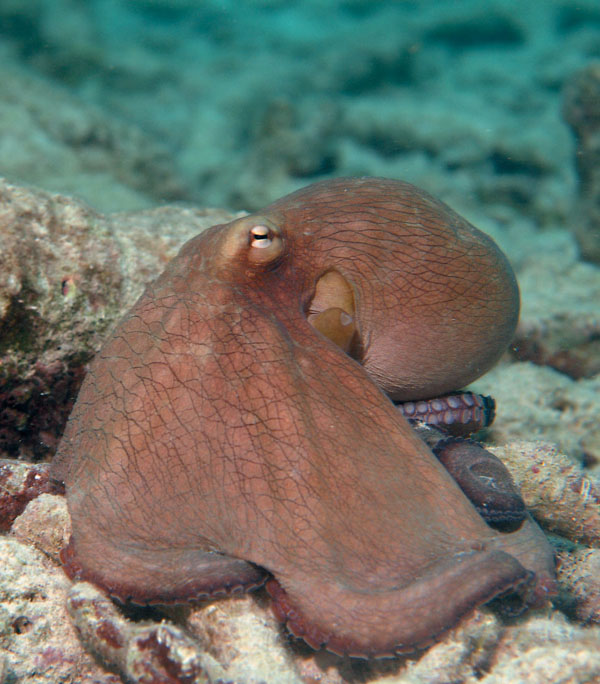Octopus (19 page)
Authors: Roland C. Anderson

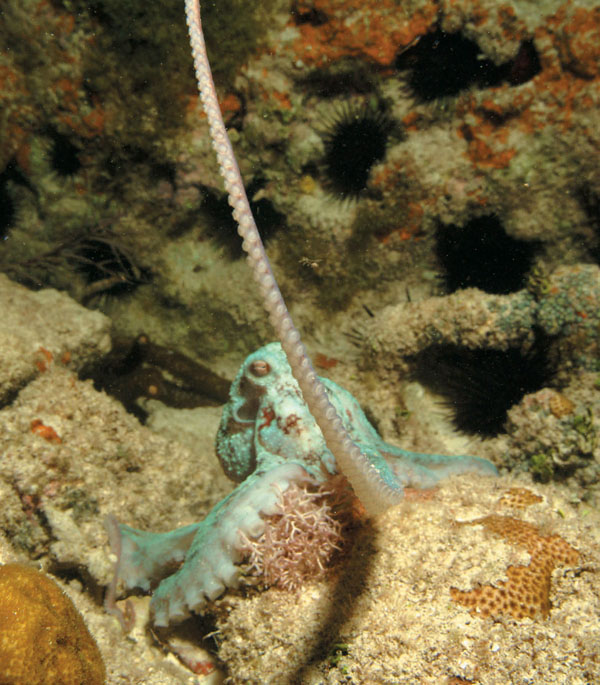
Plate 18.
By squeezing its arm until the diameter is very small, the Caribbean reef octopus (
Octopus briareus
) can extend the arm far out into the water. Dry Tortugas National Park, Florida. James B. Wood.
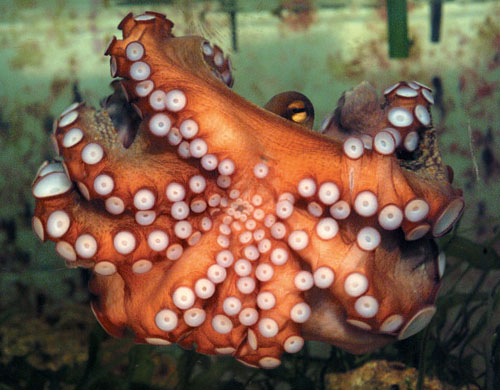
Plate 19.
This common octopus (
Octopus vulgaris
) has curled its arms back toward its head and is rubbing the surfaces against each other to shed loose sucker skin. Captivity, Konrad Lorenz Institute, Vienna. James B. Wood.
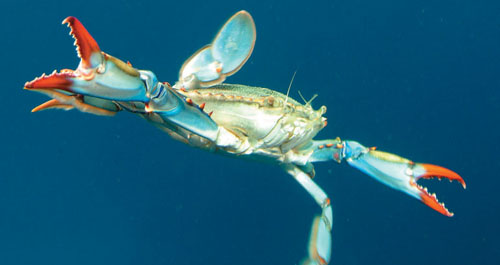
Plate 20.
Swimming crabs can be challenging for an octopus to catch, but the octopus can simply lift off the sea bottom and envelop the crab in a webover. Blue crab, Bermuda.
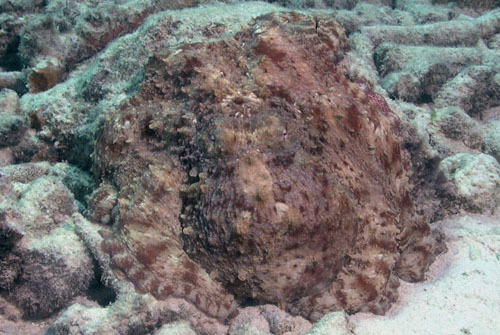
Plate 21.
This common octopus (
Octopus vulgaris
) in Bonaire, Netherlands Antilles, has camouflaged itself well against the rocks. James B. Wood.
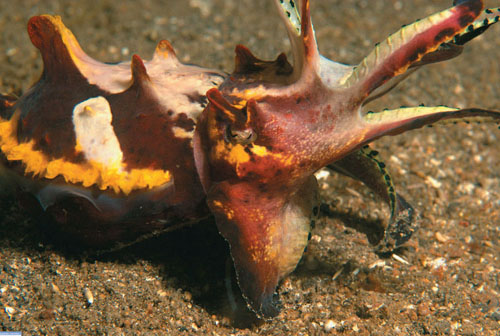
Plate 22.
This flamboyant cuttlefish (
Metasepia pfefferi
) in Indonesia is displaying warning coloration. James B. Wood.
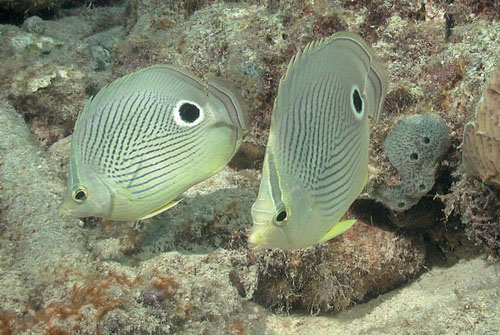
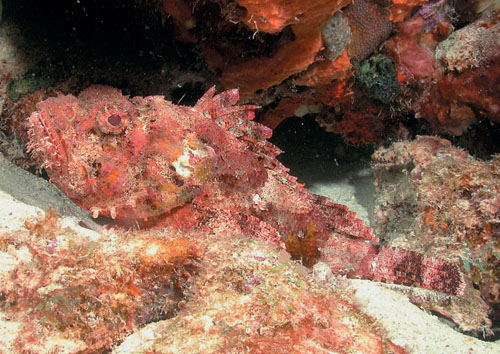
Plate 23.
Fish have more than one strategy for not being seen and caught. The four-eyed butterfly fish, above, have their eyes concealed and a fake eyespot near the tail, and the scorpion fish, below, is well camouflaged. Bonaire. James B. Wood.
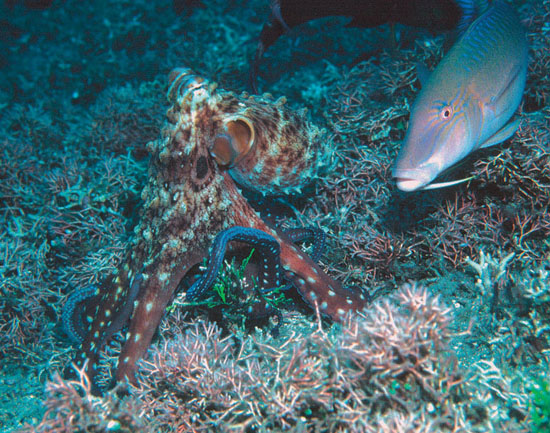
Plate 24.
This male Hawaiian day octopus (
Octopus cyanea
) is displaying White Papillae, possibly a sexual signal or camouflage. John Forsythe.
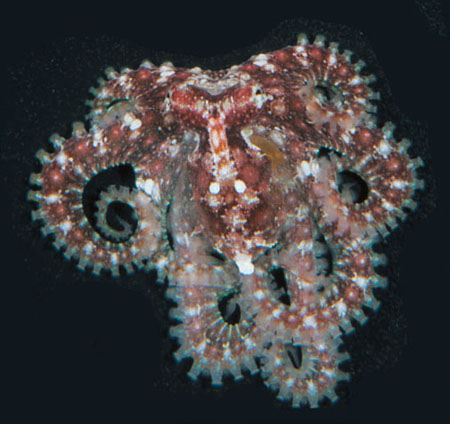
Plate 25.
The white spots on this octopus (species unknown) distract the observer not only from the real eye of the octopus (center top) but from recognizing the octopus as an animal. Roy Caldwell.
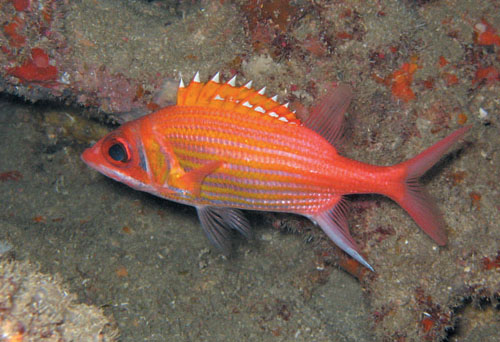
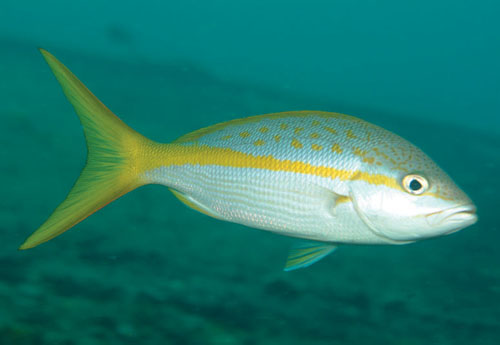
Plate 26.
Most of the fish predators of octopuses, such as the Caribbean squirrelfish, above, and this yellowtail snapper in Bermuda, below, are opportunistic and will look for any unprotected animal to eat. Above: Abel Valdivia; below: James B. Wood.
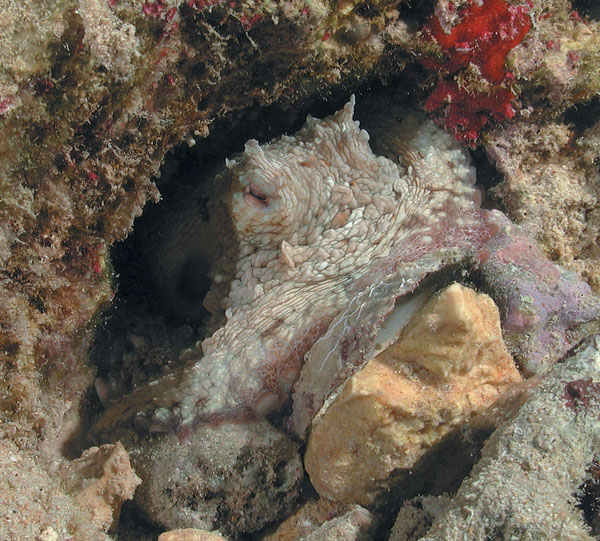
Plate 27.
Hiding is the first line of octopus defense. After retreating into the den, this common octopus (
Octopus vulgaris
) will pull rocks up to block the entrance, hiding it even more. Bonaire. James B. Wood.
